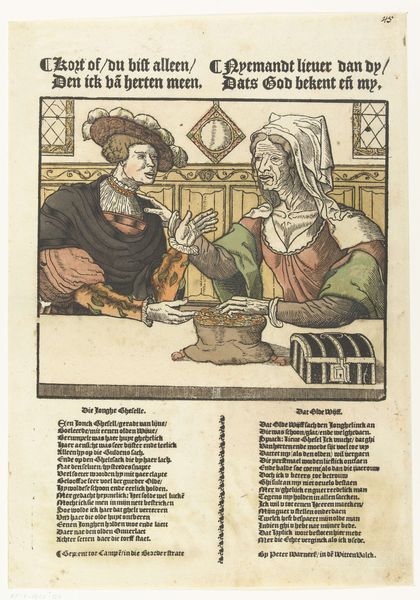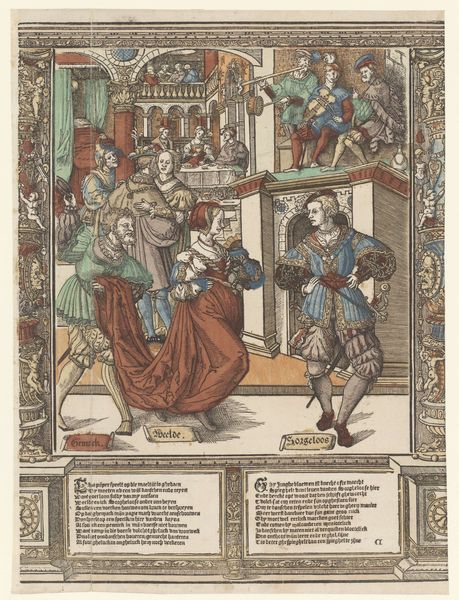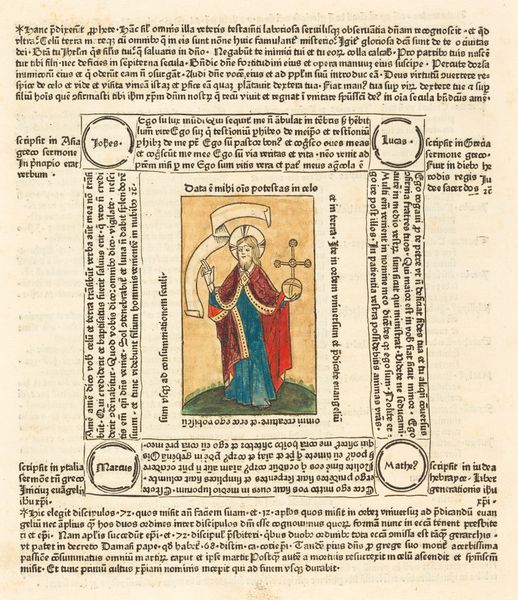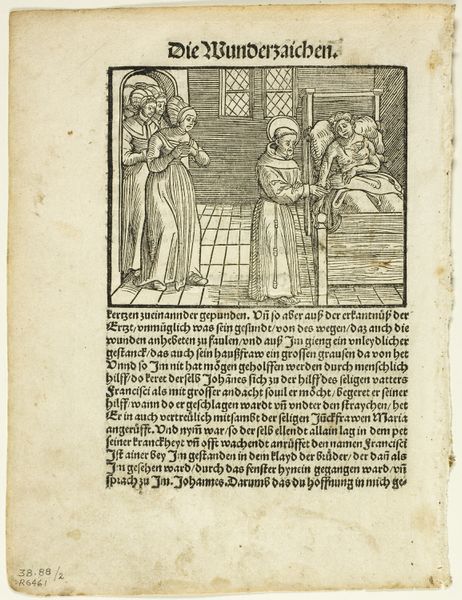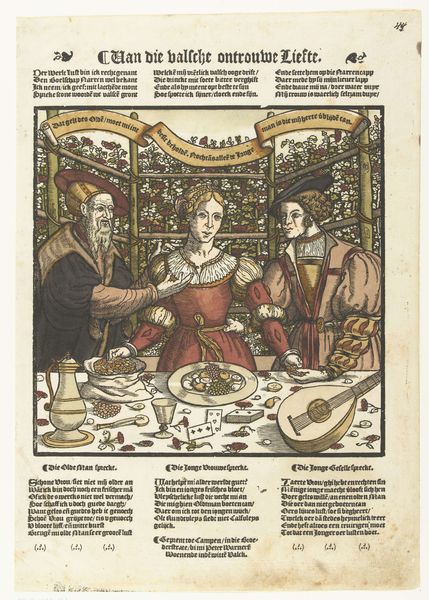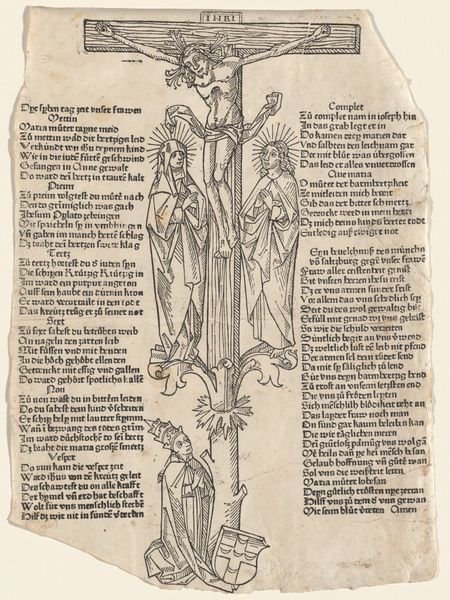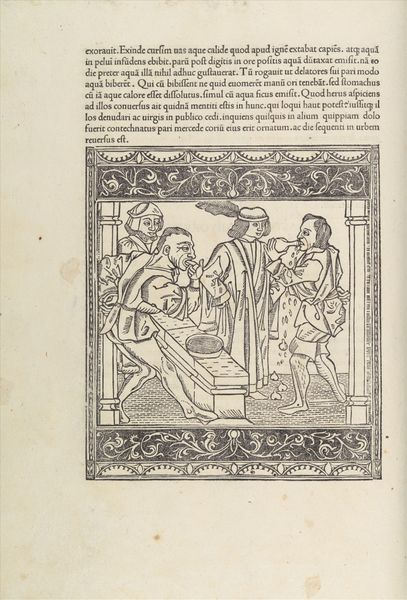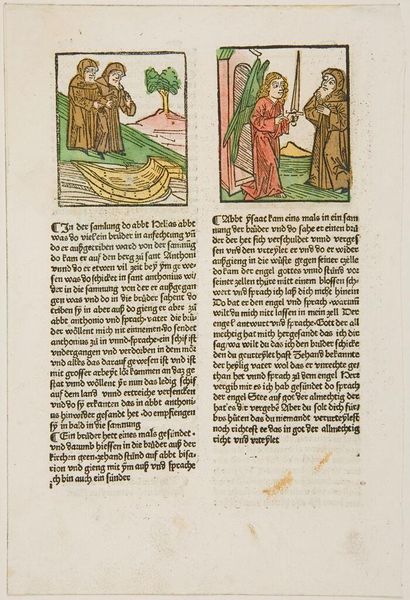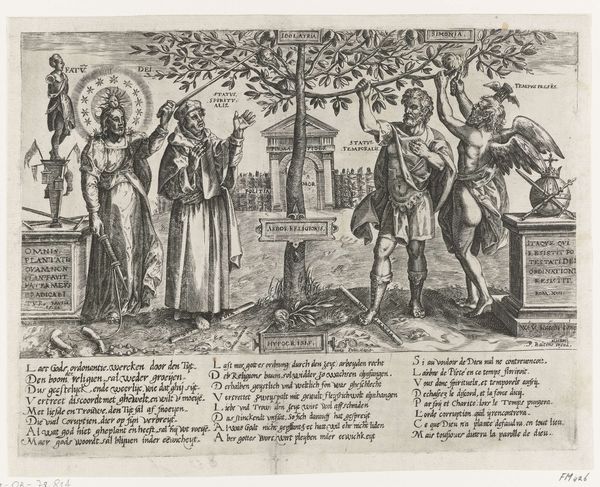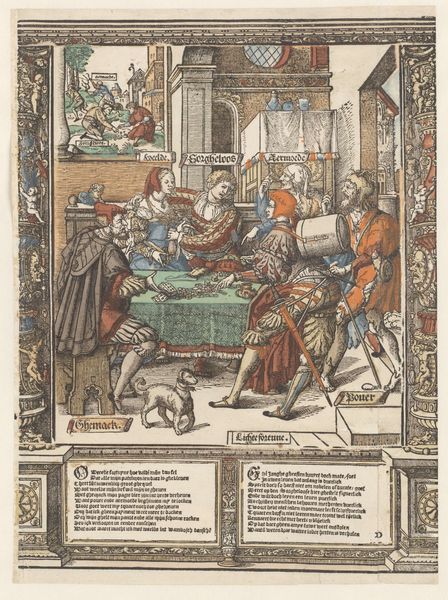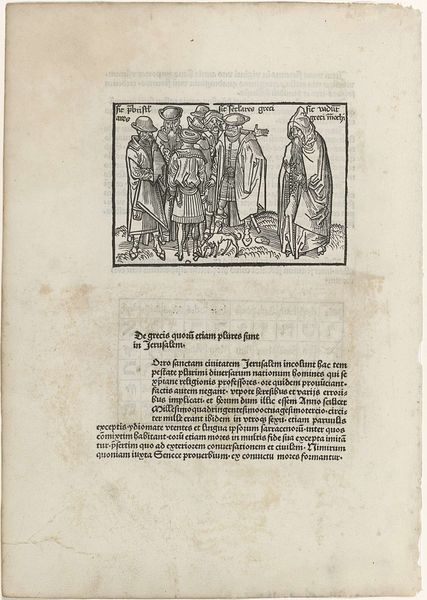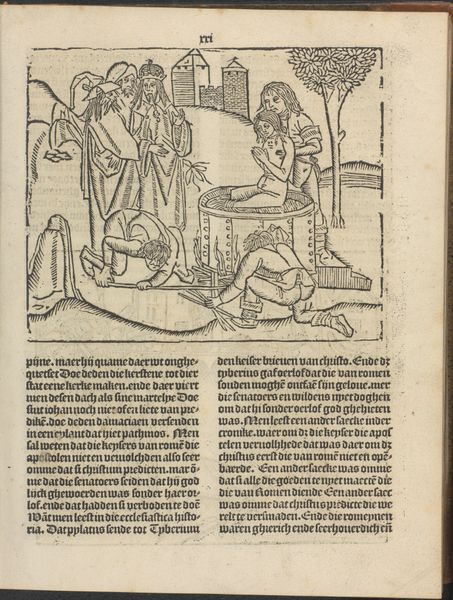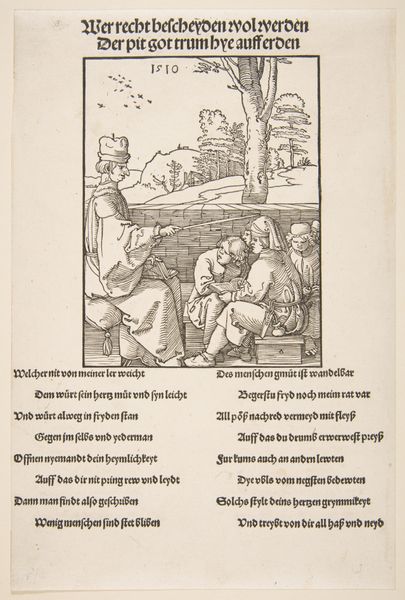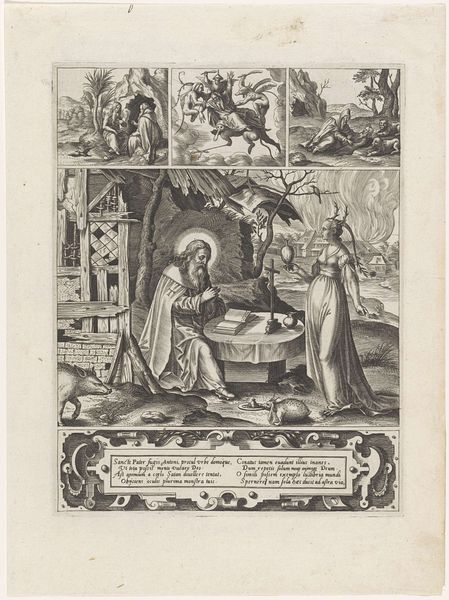
print, woodcut, engraving
#
narrative illustration
#
narrative-art
# print
#
old engraving style
#
traditional media
#
figuration
#
11_renaissance
#
woodcut
#
genre-painting
#
history-painting
#
northern-renaissance
#
engraving
Dimensions: height 231 mm, width 236 mm, height 397 mm, width 284 mm
Copyright: Rijks Museum: Open Domain
Curator: Looking at this woodcut, created around 1550-1560, the print is titled "Het door de vingers zien," which translates to "Winking at something" or perhaps "Turning a blind eye." The artist is anonymous, quite common for prints from this era. What are your initial thoughts? Editor: It's instantly striking how compact the scene feels, like a theatrical stage setting. There’s a strange stillness despite the rather… charged interactions taking place. The colors, though somewhat faded, create this almost dreamlike, unsettling mood. Curator: Let's examine the composition. The scene is bisected: a couple embraces on the left, seemingly lost in their world, while on the right, an older figure leans against a tree, appearing sorrowful or contemplative. The artist uses these juxtapositions to create a narrative tension. Semiotically, the embracing couple represents desire, the tree, the natural order. Editor: Right, I'm getting a feeling of something illicit happening. It's like that tree is silently witnessing everything. The garden setting with the central table overflowing with… questionable looking food is also fascinating, setting up this allegory where overindulgence could blind one from vice. Curator: Absolutely, and the text that accompanies the image—typical for prints of this period—reinforces this reading. Notice how the visual and textual elements combine to convey a moral lesson about the consequences of ignoring wrongdoing. Consider, too, the stylistic features – the crisp lines, the meticulous detail in the clothing, indicative of the Northern Renaissance aesthetic. Editor: Yeah, it’s all so meticulously rendered. I can't help but imagine that maybe the artist felt trapped between observing all of this foolish behavior yet understanding the flawed characters enacting the whole theater. I'm sure they probably had something on their mind at the moment and translated this thought. I do agree that this artwork provides social and historical context, and shows the timeless problem with the old vice trap of just avoiding all drama, for one's own comfort. Curator: A thought-provoking consideration, indeed. This analysis suggests how a seemingly simple print can reveal deeper cultural anxieties. Editor: Well, it certainly is one way to reveal how the seeds of chaos are usually sown, no matter the historical time period!
Comments
No comments
Be the first to comment and join the conversation on the ultimate creative platform.
